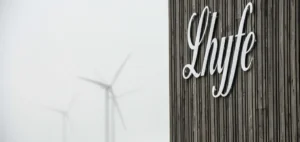Fusion developers around the world are competing to commercialize fusion energy. TAE Technologies has led the way in finding the cleanest and most economical way to provide electricity with hydrogen-boron, an abundant and environmentally friendly fuel. Today, in collaboration with the National Institute of Fusion in Japan (NIFS), TAE Technologies announced a remarkable research breakthrough: the first hydrogen-boron fusion experiments in a magnetically confined fusion plasma.
Details of the research
In a paper published by Nature Communications, scientists explain the result of the hydrogen-boron nuclear fusion reaction in an experiment in the NIFS large helix device (LHD). This paper describes the experimental work to produce the conditions necessary for hydrogen-boron fusion in LHD plasma and the development of a WT detector to measure the hydrogen-boron reaction products, namely helium nuclei, known as alpha particles.
This discovery is the result of years of collaborative international fusion science research and represents an important milestone in TAE’s mission to develop commercial fusion with hydrogen-boron, the cleanest, most cost-competitive and sustainable fuel cycle for fusion.
The objective of TAE Technologies
The company’s goal is a fusion power plant that will produce clean electricity with only helium as a byproduct. TAE Technologies is the largest privately held commercial energy fusion company in the world and this achievement represents a significant step toward the development of hydrogen-boron fusion.
The approaches of TAE Technologies
Unlike other fusion projects around the world that focus on combining the hydrogen isotopes deuterium-tritium (D-T) as fuel, TAE Technologies has chosen to pursue hydrogen-boron as the fuel cycle. TAE’s compact linear design utilizes an advanced gas pedal beam-driven reverse field configuration (FRC) that is versatile and can accommodate all available fusion fuel cycles, including p-B11, D-T and deuterium-helium-3 (D-He3 or D3He). This unique choice will allow TAE to patent its technology on the way to its ultimate goal of connecting the first hydrogen-boron fusion power plant to the grid by the 2030s.






















